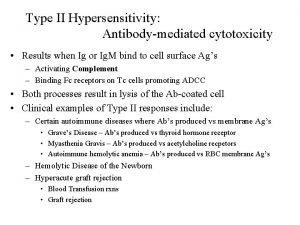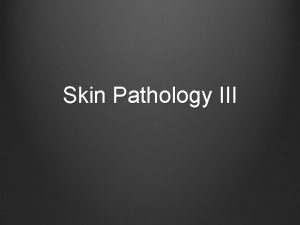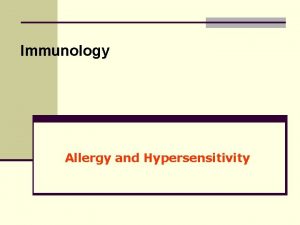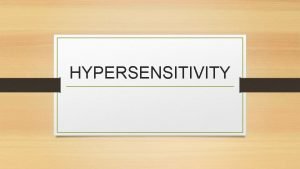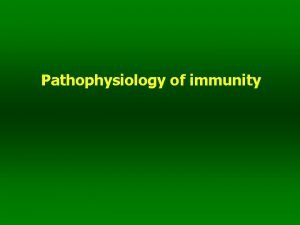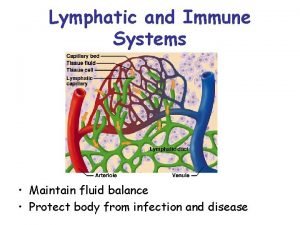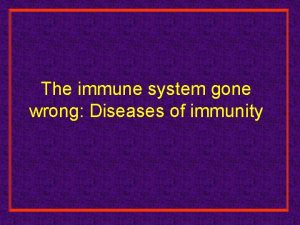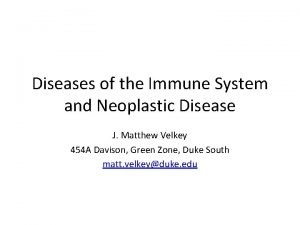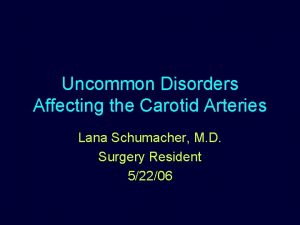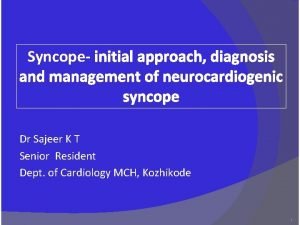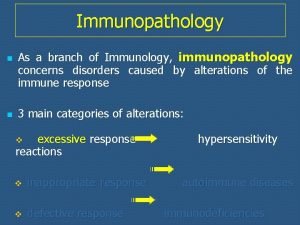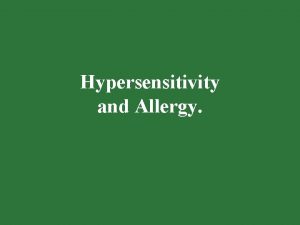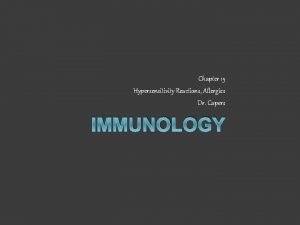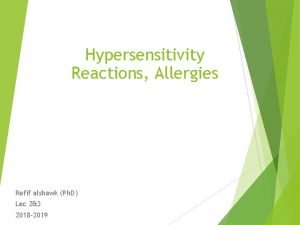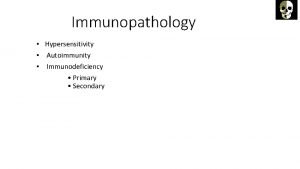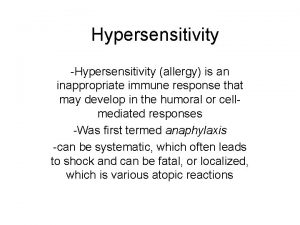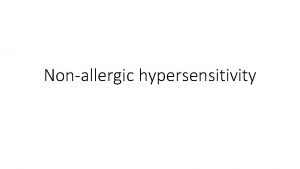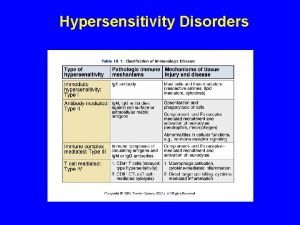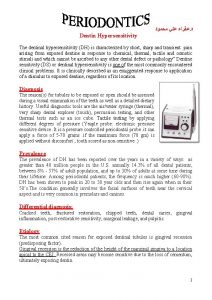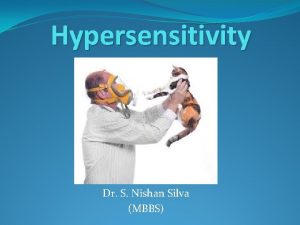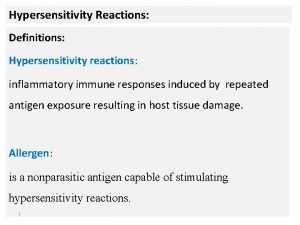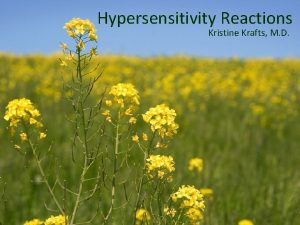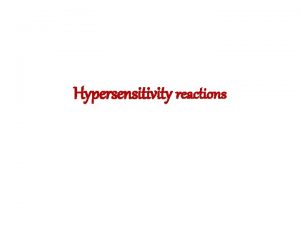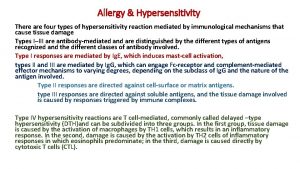Topics Type III hypersensitivity Type IV hypersensitivity 18















- Slides: 15

Topics • Type III hypersensitivity • Type IV hypersensitivity 18 -

Type III hypersensitivity • Immune complex – mediated • Activates complement • Inflammation 18 -

Figure 18. 5 Immune complex - mediated 18 -

Figure 22. 7 Glomerulonephritis 18 -

18 -

Type III hypersensitivity and disease Excess antigen farmer’s lung bacterial endocarditis malaria Streptococcus pyogenes skin and throat infections acute glomerulonephritis Rubella (German measles), early symptoms rash, painful joints, fever Disseminated intravascular coagulation clots form in small blood vessels; organ failure Arthus reaction – local reaction in response to injected antigen Serum sickness – passive immunization with animal serum antisera against diphtheria, tetanus Antigens in foreign serum induce immune response 18 -

Type IV hypersensitivity • Delayed cell – mediated • Tuberculin skin test • Contact hypersensitivities (contact dermatitis) 18 -

Type IV hypersensitivity • • 18 - Delayed cell – mediated Tuberculin skin test Contact hypersensitivities Infectious diseases

Delayed cell - mediated • Delayed hypersensitivity • Sensitized T lymphocytes 18 -

PPD – purified protein derivative 18 - Redness, induration due to sensitized T cells reacting with antigen, followed by release of cytokines and influx of macrophages Figure 18. 6 Tuberculin skin test

18 - Figure 18. 7 Contact hypersensitivities

Figure 18. 8 Severe contact hypersensitivity 18 -

Common examples of contact hypersensitivity poison ivy, poison oak nickel in metal jewelry chromium salts in leather products cosmetics latex products (Ig. E-mediated Type I reactions also) plant protein induces sensitization use vinyl gloves potential allergens detected with patch test 18 -

Infectious disease • Protective function cause tissue damage • Ex. Leprosy (damaged sensory nerves; Mycobacterium leprae) • Tuberculosis (granulomas form – tubercules; persistent Mycobacterium tuberculosis infection) • Leishmaniasis (Leishmania species survive within macrophages) • Herpes simplex (HSV-1, HSV-2 infects nerve cells emerges as cold sores, genital herpes) 18 -

18 -
 Examples of type 2 hypersensitivity
Examples of type 2 hypersensitivity Pemphigus vulgaris hypersensitivity
Pemphigus vulgaris hypersensitivity Serum sickness hypersensitivity type
Serum sickness hypersensitivity type Schultz dale phenomenon is which type of hypersensitivity
Schultz dale phenomenon is which type of hypersensitivity Dermatomyositis hypersensitivity type
Dermatomyositis hypersensitivity type Type 2 hypersensitivity
Type 2 hypersensitivity Delayed type hypersensitivity reactions
Delayed type hypersensitivity reactions Delayed type hypersensitivity reactions
Delayed type hypersensitivity reactions Hamlet act iii scene ii
Hamlet act iii scene ii Lana schumacher md
Lana schumacher md Vasovagal reaction
Vasovagal reaction Hypersensitivity personality
Hypersensitivity personality Anaphylaxis images
Anaphylaxis images Hypersensitivity
Hypersensitivity Capers allergy
Capers allergy Hypersensitivity reactions
Hypersensitivity reactions
